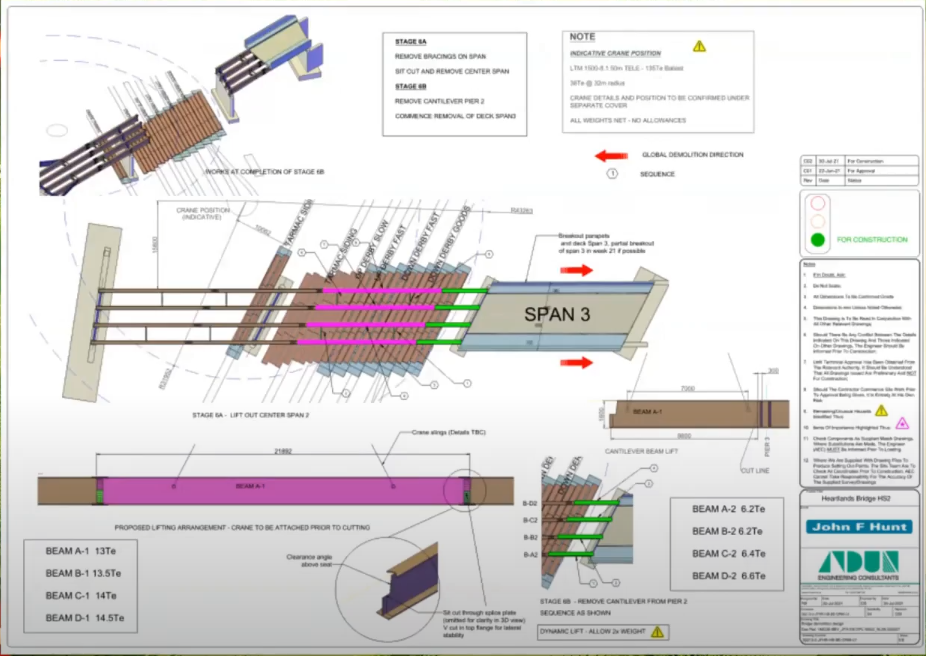Demolition of a 100-metre three-span road bridge over an active railway.
The bridge was demolished over four weeks to make way for the northern section of HS2’s phase one route between London and the West Midlands.
Principal Contractor – Balfour Beatty Vinci JV
Demolition Contractor – John F Hunt Regeneration
Client – HS2


